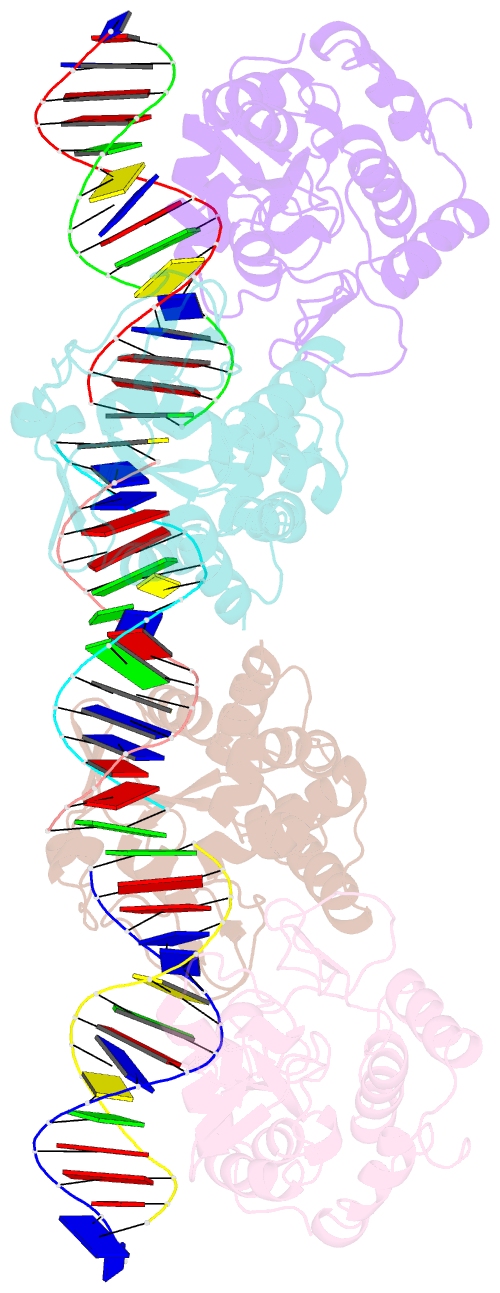Summary information and primary citation
- PDB-id
- 2ivk; SNAP-derived features in text and JSON formats;
DNAproDB
- Class
- hydrolase
- Method
- X-ray (2.9 Å)
- Summary
- Crystal structure of the periplasmic endonuclease vvn complexed with a 16-bp DNA
- Reference
- Wang YT, Yang WJ, Li CL, Doudeva LG, Yuan HS (2007): "Structural Basis for Sequence-Dependent DNA Cleavage by Nonspecific Endonucleases." Nucleic Acids Res., 35, 584. doi: 10.1093/NAR/GKL621.
- Abstract
- Nonspecific endonucleases hydrolyze DNA without sequence specificity but with sequence preference, however the structural basis for cleavage preference remains elusive. We show here that the nonspecific endonuclease ColE7 cleaves DNA with a preference for making nicks after (at 3'O-side) thymine bases but the periplasmic nuclease Vvn cleaves DNA more evenly with little sequence preference. The crystal structure of the 'preferred complex' of the nuclease domain of ColE7 bound to an 18 bp DNA with a thymine before the scissile phosphate had a more distorted DNA phosphate backbone than the backbones in the non-preferred complexes, so that the scissile phosphate was compositionally closer to the endonuclease active site resulting in more efficient DNA cleavage. On the other hand, in the crystal structure of Vvn in complex with a 16 bp DNA, the DNA phosphate backbone was similar and not distorted in comparison with that of a previously reported complex of Vvn with a different DNA sequence. Taken together these results suggest a general structural basis for the sequence-dependent DNA cleavage catalyzed by nonspecific endonucleases, indicating that nonspecific nucleases could induce DNA to deform to distinctive levels depending on the local sequence leading to different cleavage rates along the DNA chain.





